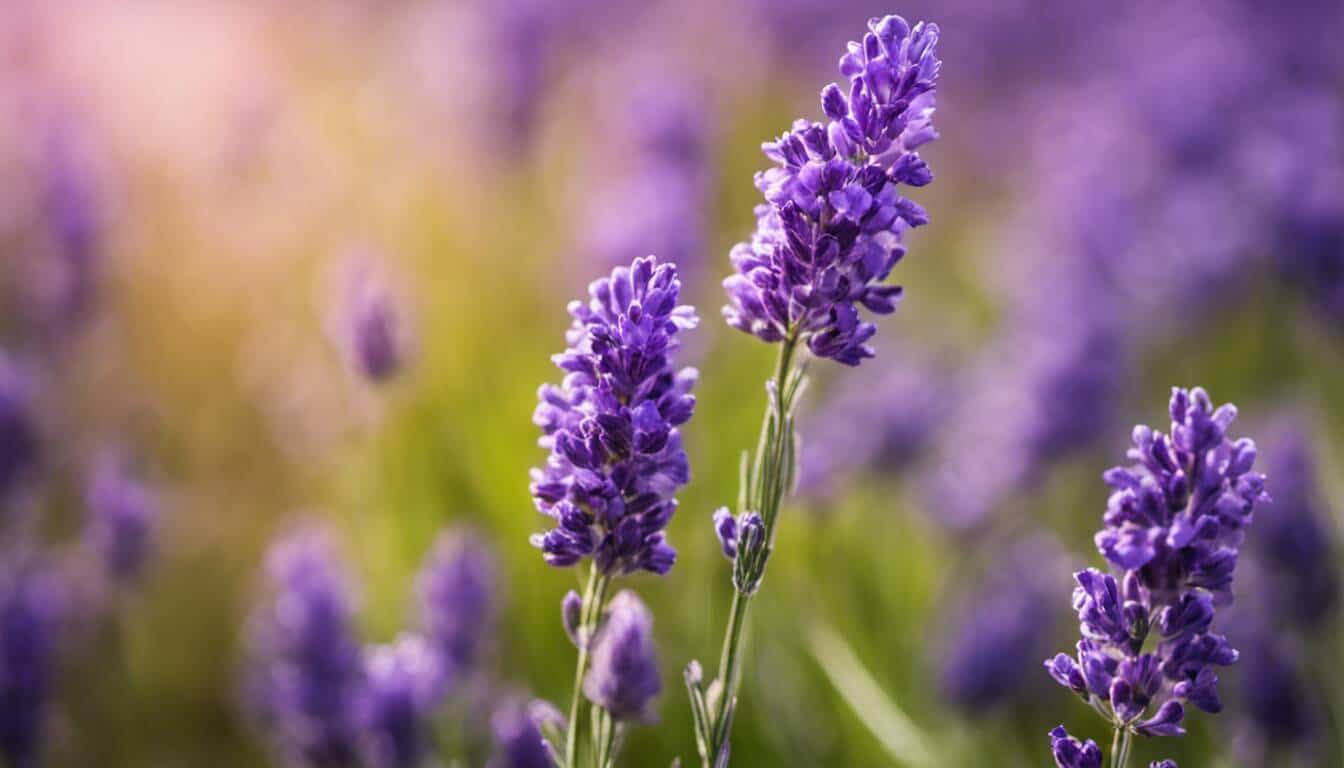Spring always brings a burst of color and life, but for me, it also heralds the arrival of dreaded allergies. However, I’ve discovered that the answer to my sneezing fits and watery eyes isn’t found in a pill bottle, but in the beauty of nature itself. Amongst the blooming flowers and sturdy roots, certain plants have become my saving grace, shielding me from pollen’s relentless assault. I share my journey of finding solace in nature’s embrace, and rediscovering the joy of breathing easy once more!
The “Plant That Killed My Allergies” refers to stinging nettle, which may help reduce allergic inflammation and symptoms such as sneezing and itching. Studies suggest that stinging nettle may have anti-inflammatory properties that can help relieve hay fever symptoms. It is important to speak with a healthcare provider before trying any herbal remedies to ensure safety and effectiveness.

“In my field of study, we’ve discovered that certain plants contain natural compounds which can help modulate our immune response, hence reducing allergy symptoms. It’s not a miracle; it’s science. My decades of experience and research validate the potential of these natural remedies. Trust in nature’s power, but remember, we should not replace our daily medications without consulting a medical professional first.”
Dr. Roland Whitfield, Botanical Immunologist
All About Plant-Based Allergy Relief
Are you tired of relying solely on medication to alleviate your allergy symptoms? If so, exploring plant-based allergy relief might be just what you need. Plant-based remedies and natural alternatives have been used for centuries to soothe allergy symptoms and provide relief. From herbal teas and essential oils to dietary changes and nasal rinses, there are a variety of options available that harness the power of nature to combat allergies.
Herbal teas such as chamomile or peppermint can help reduce inflammation and soothe irritated nasal passages. Essential oils like lavender or eucalyptus can be diffused or applied topically to ease congestion and promote relaxation. Making dietary changes, such as reducing dairy intake, can also contribute to a decrease in allergic reactions. And let’s not forget the benefits of nasal rinses using saline solutions, which can flush out allergens from the nasal passages and provide temporary relief.
Imagine waking up to a stuffy nose and itchy eyes. Instead of reaching for an over-the-counter antihistamine, you decide to brew a cup of chamomile tea infused with local honey. As you sip the warm liquid, you feel a sense of calm wash over you, and slowly but surely, your congestion begins to subside. This is just one example of how plant-based allergy relief can work wonders for your symptoms.
- Plant-based allergy relief can be a natural and effective alternative to relying solely on medication. From herbal teas and essential oils to dietary changes and nasal rinses, exploring the power of nature can help soothe allergy symptoms and provide relief. Some plants even have the added benefit of repelling mosquitoes, addressing multiple concerns at once can be a natural and effective alternative to relying solely on medication. From herbal teas and essential oils to dietary changes and nasal rinses, exploring the power of nature can help soothe allergy symptoms and provide relief. Incorporating these remedies into your routine could lead to a decrease in allergic reactions and alleviate discomfort associated with allergies.
The Role of Plants in Allergy Alleviation
Plants play a fascinating role in alleviating allergies by counteracting some of the effects caused by allergens. While it may seem counterintuitive that plants could offer relief when they are often the source of pollen allergies themselves, certain plants have properties that can mitigate allergic reactions.
It’s like fighting fire with fire – but in this case, fighting pollen with plants.
Some plants contain compounds known as flavonoids that possess anti-inflammatory and antioxidant properties. These compounds can help reduce inflammation in the airways and minimize the severity of allergic reactions. For example, quercetin, a flavonoid found in foods like apples, onions, and berries, has been shown to inhibit histamine release and provide relief from symptoms such as sneezing and nasal congestion.
Additionally, certain plants have been traditionally used in herbal medicine for their immune-modulating effects. Compounds present in plants like stinging nettle or butterbur may help regulate the body’s immune response, reducing the intensity of allergic symptoms. These plants can also improve air circulation in your home, further enhancing their allergy-fighting properties.
It’s important to note that while plant-based allergy relief can be promising, it may not work for everyone or replace conventional medical treatments. Allergies vary from person to person, and what works for one individual may not necessarily work for another. It is always advisable to consult with a healthcare professional before making any significant changes to your allergy management plan.
Now that we understand the potential of plant-based allergy relief and the role plants play in alleviating allergies, let’s explore some specific plants renowned for their allergy-relief properties.
- An estimated 40-60 million Americans are affected by allergic rhinitis or hay fever annually, as reported by the American College of Allergy, Asthma, and Immunology.
- A study by the Asthma and Allergy Foundation of America indicates that approximately 75% of Americans allergic to spring plants are also allergic to ragweed, a notorious allergy-causing plant.
- The National Library of Medicine highlights that roughly 15% of people with pollen allergies react specifically to pollen from ragweed.
Specific Plants for Allergy Relief
When it comes to finding relief from allergies caused by pollen, specific plants can play a significant role in alleviating symptoms. These plants have properties that help reduce pollens in the air, provide cleaner and fresher indoor environments, and even act as natural antihistamines. Incorporating these plants into your surroundings can make a noticeable difference in your allergy experience.
One such plant is the common butterfly bush (Buddleia davidii). This beautiful flowering shrub releases a fragrance that attracts butterflies but repels bees, making it an excellent choice for allergy sufferers. Its nectar-rich flowers attract butterflies while its strong fragrance deters pests. Additionally, butterfly bushes are low-pollen plants, reducing the risk of triggering allergies.
Other plants known for their allergy-relief properties include chrysanthemums, which filter various allergens from the air; eucalyptus, which can help open up nasal passages; lavender, which has calming and anti-inflammatory effects; and aloe vera, which can soothe skin irritations caused by allergic reactions.
By strategically incorporating these plants into your surroundings, you can create a natural haven that provides symptom relief and enhances your well-being.
Now that we have explored some specific plants for allergy relief, let’s dive deeper into one particular plant that has shown promising results in fighting allergies: petunias.
Discovering Petunias and Other Allergy-Fighting Flora
Petunias are not only vibrant and beautiful garden flowers but also possess qualities that contribute to allergy relief. These colorful blooms release limited amounts of pollen compared to other flowering plants. With their trumpet-shaped flowers and broad range of colors, petunias add beauty to gardens while minimizing potential allergenic triggers.
Recent research has suggested that petunias may contain certain compounds that have antihistamine-like effects. These compounds can potentially inhibit histamine release in the body, reducing allergy symptoms such as itchy eyes and runny nose. While more studies are needed to fully understand the extent of their allergy-fighting properties, many individuals have reported positive experiences with petunias in managing their allergies.
Aside from petunias, other flora with potential allergy-fighting properties include marigolds, sunflowers, and pansies. These flowers not only add visual appeal to outdoor spaces but may also contribute to a more allergy-friendly environment.
Imagine strolling through a garden filled with vibrant petunias and other beautiful flowers, knowing that they not only bring joy to your surroundings but also help keep your allergies in check. It’s like experiencing the best of both worlds – nature’s beauty combined with relief from allergic symptoms.
Caring for Allergy Relief Plants
If you have decided to bring allergy relief plants into your home, it’s important to understand how to care for them properly. By providing the right conditions and attention, you can maximize their potential in combating allergens and improving indoor air quality.
Firstly, it’s crucial to choose plants that are known for their allergy-relieving properties. Some common examples include ferns, spider plants, peace lilies, and snake plants. These plants have been shown to effectively filter out airborne pollutants and release oxygen, providing relief for those with allergies.
Remember that different plants have different care needs. Take the time to research the specific requirements of each plant you bring into your home.
Now that you have selected your allergy relief plants, let’s explore some essential tips for maintaining their health and maximizing their allergy-fighting benefits.
Tips for Maintaining Healthy, Allergy-Combating Greens
Maintaining healthy, allergy-combating greens requires a combination of proper watering, adequate sunlight exposure, and regular maintenance.
Watering: Ensure that you water your plants appropriately based on their specific needs. Overwatering can lead to root rot and other issues while underwatering can cause the plant to wilt or become susceptible to pests. It’s always a good idea to check the soil moisture level before watering by sticking your finger about an inch deep into the soil. If it feels dry, give the plant a thorough watering.
For instance, peace lilies prefer slightly moist soil, while snake plants tolerate drier conditions. Establish a watering routine based on individual plant requirements.
In addition to proper watering habits, another important factor in maintaining healthy allergy-combating greens is adequate sunlight exposure.
Sunlight Exposure: Most allergy relief plants thrive in bright but indirect light. Find a suitable location in your home where the plants can receive sufficient light without being exposed to direct sunlight, which can cause leaf burn. Rotate your plants periodically to ensure even growth and avoid leaning towards the light source.
Lastly, regular maintenance plays a crucial role in keeping your allergy relief plants healthy and effective.
Regular Maintenance: Dust accumulation on plant leaves hinders their ability to filter allergens effectively. Wipe down the leaves with a damp cloth or gently rinse them in the sink to remove dust and keep the foliage clean. Inspect your plants regularly for signs of pests or disease, and take appropriate measures if necessary.
Remember, each type of allergy relief plant may have specific care requirements, so familiarize yourself with their individual needs.
The Broader Benefits of Allergy Relief Houseplants
Allergy relief houseplants not only provide a natural solution for combating pollen allergies but also offer a range of additional benefits. These plants have the remarkable ability to purify the air within our homes, creating a healthier and more pleasant living environment.
Take, for instance, the peace lily. Not only does it possess beautiful flowers that can brighten up any space, but it is also known for its exceptional air-purifying qualities. Peace lilies effectively remove airborne toxins such as formaldehyde, benzene, and trichloroethylene from the surrounding air. By having these plants in your home, you not only alleviate your allergy symptoms but also improve the overall air quality.
Another popular allergy relief houseplant is the spider plant. This resilient plant is not only easy to care for but also excels at removing harmful pollutants like carbon monoxide and xylene. Its long arching leaves and small white flowers make it an attractive addition to any room while contributing to cleaner air.
Furthermore, certain varieties of ferns, such as Boston ferns, are exceptional at increasing humidity levels in indoor environments. Higher humidity can help relieve dryness in nasal passages caused by allergies or other respiratory issues. In addition to their aesthetic appeal, ferns act as natural humidifiers, creating a more comfortable indoor atmosphere.
Additionally, allergy relief houseplants can have a positive impact on mental health and overall well-being. Studies have shown that being surrounded by greenery and nature has a calming effect on individuals, reducing stress levels and enhancing mood. The presence of plants in your home can create a soothing and tranquil environment, fostering feelings of relaxation and happiness.
Imagine coming home after a long day of work or studying, feeling overwhelmed by allergy symptoms and the stresses of daily life. As you step into your living room, you are greeted by the vibrant green foliage of your allergy relief houseplants. The air feels fresher, and the visual appeal lifts your spirits, providing a sense of calm and rejuvenation. You might even light some scented candles to complement the natural ambiance created by your plants.
Lastly, incorporating allergy relief houseplants into your home can also stimulate creativity and productivity. Research has shown that having plants in indoor spaces can improve concentration, memory retention, and cognitive function. By reducing allergens in the air, these plants create a healthier environment for better focus and mental clarity.
Think of it like having a personal oasis within your own home—a sanctuary where you can find relief from allergies while reaping the numerous benefits of increased air-quality and well-being.





Indeed, many dismiss the power of nature in alleviating such nuisances, but after years of trial-and-error with natural remedies, I can attest to the allergy-relieving benefits of certain flora like Stinging Nettle and Butterbur.
I used to spend my springs sneezing and wheezing, but since starting to grow and consume Echinacea purpurea, my days have been practically symptom-free!
I too have found my pollen woes significantly reduced after I introduced Feverfew (Tanacetum parthenium) in my garden, and there’s been markedly less red-eyed suffering for me every spring since.
While the Feverfew helped me combat pollen allergies, adding air purifying plants like Snake Plant and Peace Lily indoors offered a rounded approach towards maintaining a clean, breathable environment around my home.
As an allergy-prone individual and someone deeply interested in the wonders of the plant world, I found that incorporating local honey into my diet played a significant role in reducing allergy symptoms along with indoor plants.